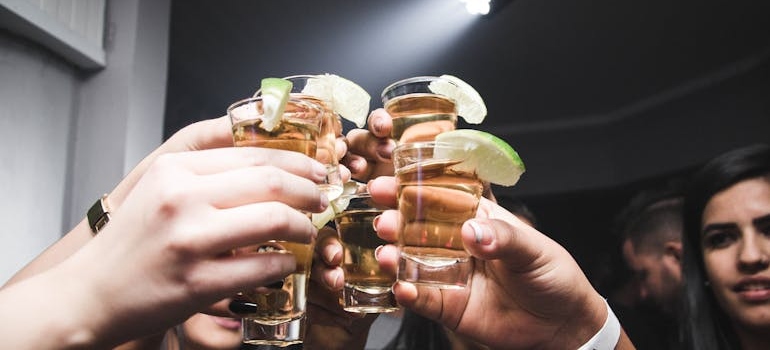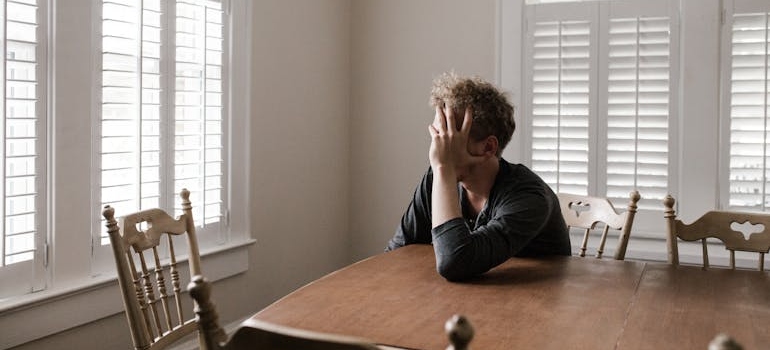What Is the California Sober Lifestyle and Is It Right for You?
The California sober lifestyle means staying off hard drugs while still using some substances in moderation—usually cannabis or alcohol. This approach doesn’t work for everyone, but it’s helped some people stay out of addiction while still feeling in control. You might feel confused hearing mixed opinions about it. That’s normal. Some people swear by it, others warn against it. The truth is, your recovery path should fit your life—not someone else’s idea of “right.” If you’re thinking about trying this lifestyle, it’s important to know what it means and what to expect. You don’t have to figure it out alone. Little Creek Recovery PA supports all paths that lead to healing. If you’re unsure what works for you, this breakdown can help you take the next step with more clarity and less pressure.
Jump to Section
Understanding the California Sober Lifestyle
The California sober lifestyle means cutting out hard drugs but allowing some controlled use of alcohol or cannabis. It doesn’t follow full abstinence like most recovery paths. Some people use this method after traditional sobriety doesn’t feel sustainable. Others turn to it as a way to manage anxiety or social pressure. This approach is flexible, but it still requires limits and self-awareness.

You can’t just “kind of” recover—you still need a plan. People often ask, is California sober considered sober? That depends on who you ask. Some programs say no, others say progress matters more than rules. There’s also growing curiosity around how many people are 100% sober today, especially with new models like this one becoming more common. You get to decide what recovery means for you.
What Substances Are Typically Allowed or Avoided
People often ask what’s allowed in the California sober lifestyle. This approach isn’t one-size-fits-all. Some people use cannabis, others drink socially, and many avoid hard drugs completely. What matters most is setting boundaries that help you stay stable without falling into old patterns. Each choice has its own risks and benefits. These next sections explain how different substances fit into this lifestyle and what you should think about before including or avoiding them.
Is Cannabis Use Part of the California Sober Lifestyle?
Cannabis use is common for people following the California sober lifestyle. Some say it helps manage anxiety or sleep. Others use it to avoid drinking or harder drugs. Still, it’s not risk-free. THC can affect mood, memory, and decision-making, especially in early recovery. If you’ve struggled with marijuana before, you may want to stay away.
On the other hand, some people manage to use it without falling back into other substances. It depends on your history and your mental health. You should ask yourself: Am I using this to cope or to escape? If you’re looking for support and want to build healthy habits, programs like marijuana rehab Pennsylvania centers have may offer guidance. They don’t force full abstinence. They help you figure out what’s actually working for you.
Avoiding Hard Drugs While Staying California Sober
Hard drugs have no place in the California sober lifestyle. That includes things like meth, heroin, and cocaine. Even if you use alcohol or cannabis, staying away from hard substances is key. These drugs carry serious health risks and quickly undo any progress you’ve made. One-time use can lead to relapse, overdose, or worse. It’s not about judgment—it’s about safety.
If you’re tempted to use again or have slipped up, it’s okay to get help. Recovery isn’t perfect. People make mistakes. What matters is what you do next. Seeking help from a cocaine rehab could save your life. You don’t need to be using every day to get support. Even occasional use can put you at risk. Be honest with yourself and don’t wait for things to get worse.
How Alcohol Fits Into the California Sober Lifestyle
Some people who follow the California sober lifestyle still drink occasionally. That can be risky, especially for people who’ve had problems with alcohol in the past. It’s important to know your limits. One drink can easily turn into more. If you’re using alcohol to numb emotions or escape, it’s time to pause and reflect. This lifestyle isn’t an excuse to drink.
It’s a way to avoid harder substances while still keeping control. If alcohol feels like a problem again—or if it always was—there’s no shame in stepping away from it completely. Places like an alcohol rehab center Middletown NY has offer care without pressure. You don’t have to hit rock bottom to ask for help. If alcohol keeps pulling you down, you deserve something better.

Why Some People Choose the California Sober Lifestyle
This approach gives people room to stay away from what harmed them most without going fully dry. Many feel more in control with cannabis or social drinking than when using hard drugs. Others want to stay sober at a party but still feel comfortable with some alcohol. Everyone has their reasons. Here are a few:
- Past relapse from strict programs: Too much pressure made things worse
- Cannabis feels safer: Used to manage pain or anxiety
- Alcohol helps with social anxiety: Especially in professional settings
- Fear of isolation: Want to stay connected without hiding
- More flexible support networks: Like non-abstinence-based recovery groups
Risks and Criticism of the California Sober Lifestyle
Some people say this lifestyle opens the door to relapse. Using cannabis or alcohol can still lead back to heavier use if you’re not careful. Critics warn that people may use it as an excuse instead of a real plan. And honestly, some people do. That’s why it’s not for everyone. It requires honest self-checks and strong limits.
Others argue this approach confuses the idea of sobriety. But recovery isn’t always black and white. What matters is feeling better and not going backward. If full abstinence has never worked, you may still want something structured like sober living Pennsylvania programs. These can help you build habits that work without shame or labels. You still deserve support, even if your path looks different.

Is the California Sober Lifestyle Right for You?
This approach isn’t perfect for everyone. Some people need full abstinence. Others do better with a little more flexibility. You have to look at your habits, history, and triggers. You also need support—not just willpower. These next sections will help you think about what works for you. You’ll learn how to build a plan, talk with the right people, and be honest about your needs and limits.
Factors to Consider Before Adopting This Lifestyle
There’s a lot to think about before making this choice. These factors can help you decide:
- Your past with substances: Look at what has triggered you before
- Your current mental health: Mental health challenges can affect self-control
- Your support system: A strong support system can help you stay focused
- Your reasons for trying this approach: Know why you’re choosing this path
- Your goals for recovery: Be clear on what you want to change and keep
Talking to a Therapist or Recovery Coach
You don’t have to figure it out alone. Talking to a therapist or coach can help you think clearly. They won’t force a plan that doesn’t feel right. Instead, they ask questions that help you find your own answers. You can talk through your triggers, your fears, and your goals. That matters.
A lot of people start this lifestyle on their own but feel lost after a while. Working with someone gives you structure and support. It can also give you tools for setbacks and stress. If you’re looking for help that’s flexible and supportive, an outpatient detox rehab PA has might be a good fit. These programs give you space to learn and adjust without stepping away from work or home. You’re not alone in this.

Knowing Your Triggers and Limits
Triggers are real. So are limits. Some people can have a drink and stop. Others can’t. You need to be honest about what sets you off. It might be a place, a person, or a feeling. Knowing your triggers means you can plan for them. Avoiding what brings you down isn’t weakness—it’s smart. It shows that you’re paying attention.
This lifestyle only works when you set clear lines. Think about how you react when you’re stressed, lonely, or bored. Ask yourself what you can handle right now. You don’t have to prove anything. If something feels unsafe, it probably is. You can always change course. Learning your limits doesn’t mean giving up—it means staying safe. And that’s what matters most in recovery.

California Sober Lifestyle vs. Other Recovery Models
There are many recovery paths, and this one doesn’t fit the mold. Traditional 12-step programs focus on complete abstinence. Harm reduction allows any level of use with safety planning. The California sober lifestyle sits in the middle. It helps people quit hard drugs while staying social and functional. Some treatment centers won’t accept this model. Others support it with therapy and monitoring. If you’re exploring treatment options, check for plans that include anthem rehab coverage or flexible outpatient care. Here’s how this model compares:
- California Sober vs. 12-Step: More flexible, less structured
- California Sober vs. Abstinence: Allows some use, not total avoidance
- California Sober vs. Harm Reduction: More focused on quitting hard drugs
- California Sober vs. Moderation Management: Focuses on quitting specific drugs, not just limiting use
- California Sober vs. MAT programs: Doesn’t involve daily medication or medical supervision
- California Sober vs. Cold Turkey: Offers gradual change instead of cutting everything at once
Building a Support System While Living California Sober
You can’t do this alone. Support helps you stay grounded, catch yourself early, and feel less judged. This lifestyle can be hard to explain to people who only know one type of recovery. Some friends may not understand your rules. That’s okay. You don’t need everyone to agree—you just need people who care.
Talk to a therapist, recovery coach, or someone who’s been through it. Find online groups or local meetings that accept your approach. Avoid people who pressure you to use more than you’re comfortable with. Set clear limits and protect your peace. Let your loved ones know what support looks like to you. Be honest when things feel hard. Even one solid person in your corner can make a huge difference when you’re trying to change.

Making the California Sober Lifestyle Work Long-Term
Long-term success depends on what you put into it. You need more than willpower. Build structure, routines, and healthy outlets. Don’t just “wing it.” Plan for tough days. Know your reasons. Stay honest with yourself and others. These strategies help you stay grounded:
- Track substance use: Helps you spot patterns before they become problems
- Avoid risky situations: Say no when something feels off
- Use therapy: Regular sessions can keep you focused
- Join a peer support group: Keeps you connected
- Set goals each week: Keeps your recovery moving forward
Your Path Doesn’t Have to Look Like Anyone Else’s
The California sober lifestyle isn’t the answer for everyone. But for some, it creates a way to stay grounded without feeling boxed in. You might be exploring it because full sobriety feels too extreme—or maybe traditional programs haven’t worked. That’s okay. What matters most is your safety and progress. If you’re still using and trying to get better, that effort counts. Be honest with yourself. Set limits that protect your mental health. Talk to people who won’t judge you. You don’t have to follow a strict rulebook to find peace or build a healthier life. There are different ways to recover, and it’s okay to figure out what works for you. If you’re unsure what your next step is, getting real support can help you move forward without pressure or shame.